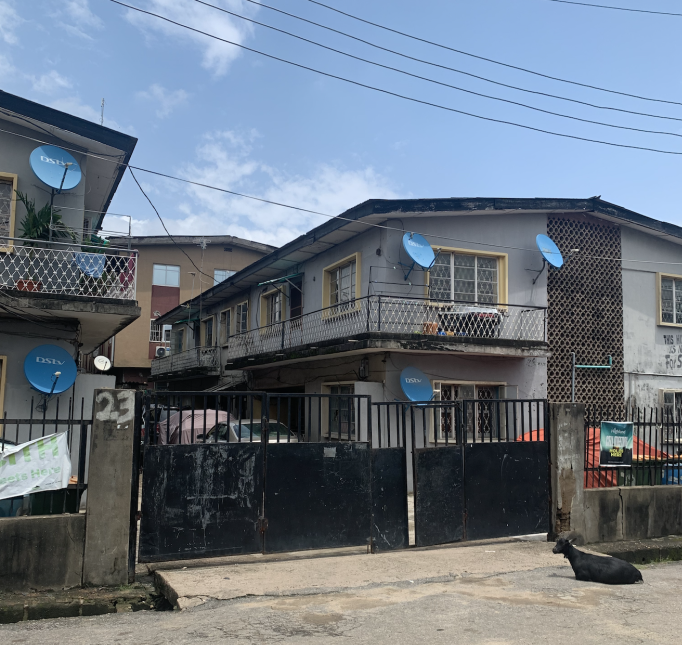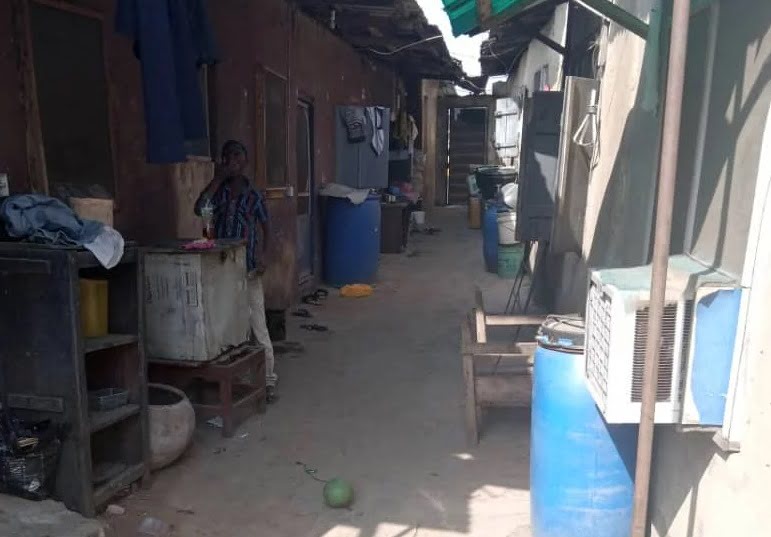Dear Beamers,
Greetings!
Face-Me-I-Face-You houses have been a fixture for generations, particularly prominent in Nigeria’s southwestern regions. Known colloquially as “Face-Me-I-Slap-You” due to occasional disputes, these tenement buildings provide residential accommodations in lower-income neighborhoods. Typically comprising single-room apartments or a “room and parlour” layout, these buildings feature shared facilities such as kitchens, bathrooms, and toilets. The lifestyle within these structures offers valuable life lessons, prompting our interest in exploring Nigeria’s Face-Me-I-Face-You phenomenon in this week’s newsletter.
The name “Face-Me-I-Face-You” originates from the layout where rooms are arranged in two rows facing each other. Residents in the left wing share amenities among themselves, while those in the right wing do the same on their side. Each row may include up to five rooms or even more, accommodating as many as seven individuals per room. This communal living setup presents both challenges and opportunities, shaping the character of Face-Me-I-Face-You houses.
Its alternative name, “Face Me I Slap You,” reflects its origins in the daily conflicts that occur within. Misunderstandings are commonplace over nearly everything. Weekday mornings are particularly chaotic, and weekends can exacerbate tensions further. Residents rush to prepare for work, school, or business, often leading to amusing scenes of disorder and misplaced items. It’s akin to solving a daily puzzle within a community-sized household, where establishing individual perspectives and life claims inevitably leads to misunderstandings.
Agboola Nabir shared his experiences from a Face-Me-I-Face-You house. According to him,
“My experience in a face-me-I-face-you is a stressful one but if I think of it sometimes it makes me laugh. The noise level there was unbearable; you can hear every argument and conversation. Cooking in the shared kitchen is always a hassle; as a guyman I always had to wake up early to get a spot. It was tough to keep our belongings safe with so many people coming and going. There’s no privacy; everyone knows everyone else’s business. What about the shared bathroom? It is always dirty, and you have to wait in line to use it.”
He added: “The most annoying part for me is that there’s always the neighbour that won’t let others sleep at night from the very loud music blasting from the room. If you complain you’d be reminded that you’re an enemy of progress and that you can go and buy yours likewise. I saw a lot, I can never recommend face-me-I-face-you to anyone ever.”
In any Face-Me-I-Face-You setting, there is always a diverse array of personalities to encounter, making it nearly impossible not to find a unique mix of individuals. From exceptionally fascinating to occasionally frustrating characters, emotions run high and activities abound. Among them, you’ll often find someone known as the ‘lecturer’ or ‘professor’—not because they hold those titles professionally, but because of their reputation for knowledge and intelligence. They are similar to walking encyclopedias, providing valuable insights and solutions. Children often seek them out for help with assignments, and neighbors turn to them for discussions requiring intellectual input. It’s not uncommon for these individuals to be pursuing postgraduate studies at a nearby university, recently graduated, or planning to further their education abroad.

Then there’s “the Advocate,” inherently a human rights activist rather than by profession. They bring everything to due justice, fearlessly fighting for tenants’ rights as if they have nine lives. This spirited character believes in collective action and ensures that decisions are thoroughly considered before being made. Many tenants trust their judgment to choose what is beneficial for everyone in the Face-Me-I-Face-You community.
Another notable character is “The Errand Woman.” Her laziness is legendary; she constantly requires assistance for everything she does. While she is often relied upon to send children on errands, the kids are not particularly fond of her. At her request, they often retreat to their rooms, feigning sleep. Her nature is well-known, and she frequently asks even older neighbors for petty favors she cannot manage on her own in return.
Still present in the neighborhood drama is another character known as “The Money Man.” This tenant stands out from the rest with a room filled with luxuries that even the landlord envies—smart TV, DStv, a ‘I better pass my neighbour’ generator, trendy outfits, overpowering fragrances, and sometimes even exquisite vehicles. They are seen as the pinnacle of social status among their neighbors, who often visit them to charge their phones, appliances, or simply enjoy the comfort of their well-appointed apartment.
In contrast, there’s their polar opposite, “Na Condition Bring Me Here.” These individuals may have lived in affluent areas in the past but now find themselves in Face-Me-I-Face-You houses due to financial constraints. They often reminisce about their former life, traveling the world and enjoying various luxuries. Unfortunately, circumstances such as a failed business venture or a deceitful partner led them to their current situation of residing in more modest accommodations.
Then there’s the one who claims the title of “The Chief Tenant,” surpassing all others. Imagine living in a place for many years, perhaps even a decade or more, and knowing every corner and detail of the entire area. They can recount the area’s history, knowing the backstory of every family in the neighborhood. If you mention any rumor about the house or community, they can provide a detailed documentary, narrating events scene by scene from inception to resolution. They command respect; no one dares to challenge or correct them anymore. Having resided in the apartment for so long, they expect to be treated with the respect and authority typically reserved for actual landlords.
Adebayo Abosede recounted her experience with an exceptionally nosy neighbor during her time living in a Face-Me-I-Face-You house. According to her,
“There was this nosy woman in my last face-me-I-face-you house who made life unbearable. She was a hairdresser, and every time I went to get my hair done, she’d recycle secrets from one customer to another, all under the guise of keeping the conversation going. Before you could finish getting your hair done, your head would be filled with everyone else’s business and drenched in saliva from her endless talking. She’d talk about who was cheating on whom, who was struggling to pay rent, and even intimate details about people’s lives that should have been private. It was impossible to avoid her.”
Originally designed as single-family homes for large families, Face-Me-I-Face-You houses have evolved into tenements accommodating diverse groups of low-income renters. These structures often feature shared kitchens and bathrooms located in a separate service building behind the main house. Historically, in the late 19th and early 20th centuries, this housing type underwent transformation influenced by the return of ex-slaves from Brazil. Primarily of Yoruba heritage, a predominant ethnic group in the Lagos region, these returnees introduced a Brazilian architectural style characterized by sturdy construction and elaborate plaster ornamentation on the exterior of one- or two-story stuccoed buildings (sobrados) with a linear interior layout.

Since then, Face-Me-I-Face-You accommodations have become homes to diverse ethnic groups from across the country, bringing together tenants who were previously unfamiliar with each other, leading to social tensions and competition for a better standard of living. The dynamic daily interactions in these complexes have made them a popular backdrop for Nigerian dramas and comedies, showcasing both the charming and challenging aspects of living in close proximity to sometimes larger-than-life neighbors.
Many landlords view the construction of such housing as a means to bridge societal inequalities and address the accommodation needs of financially struggling sectors of the population. This approach has also served as a viable solution for the rapidly expanding cities in Nigeria, introducing modern architectural practices and acting as a catalyst for societal change in the nation.
Face-Me-I-Face-You houses, although often in a state of disrepair today, once embodied significant architectural ideals that sparked a conversation about the past and future of Nigerian architecture. Despite the diverse mix of personalities, these houses foster an unparalleled sense of community. They are places where strong bonds are forged; neighbors become friends, and friends become like family. Through shared daily struggles, laughter, and tears, residents form deep connections that shine brightly in times of joy and sorrow.




